User Manual
Abbey Road Studios Brilliance Pack
Foreword by Peter Cobbin
Introduction
RS127 Rack
RS127 Box
RS135
Abbey Road Brilliance Pack for Amp Room
Extended Features
Credits
“Welcome to a little Abbey Road brilliance.
Throughout the ‘60s there were a number of small boxes dotted around Abbey Road Studios, which were simply known as ‘Brilliance’ or ‘Presence’ boxes. In this era, engineers were looking for ways of adding presence to their recordings, especially in popular music. Enter the Brilliance boxes: these simple passive equalizers were portable versions of the grey RS127s that were rack-mounted into the studio control room patchbays. They were designed to give Abbey Road Studios recording engineers additional frequencies that were not found on the EMI REDD studio mixing desks of the time.
Meet Lester
Lester Smith is a technical engineer at Abbey Road Studios and, amongst other things, is the custodian of our vintage equipment and microphone collection.
In recent years, while working on various Beatles and John Lennon-related mix projects, Lester introduced me to these little boxes. My assistants Mirek Stiles and Sam O’Kell had observed that, in various ‘60s setup sheets, the prevailing EQ was marked as “RS127”. This equalizer was the 127th item made in-house by EMI for the Recording Sector. Keen to try these, Lester blew 40 years of dust from some of the boxes and wired them into our patchbay via the old ‘Siemens’ connectors and presto – instant zing! The large cut and boost control made it very easy to hear an immediate presence. Put simply – they’re brilliant!
The Sixties were an adventurous period in our history. Rule books were put aside and considerable experimentation by engineers helped shape ways and means of producing sounds not heard before. Following this spirit of experimentation, our latest plug-in suite provides today’s engineer and musician with a bundle of little boxes straight from this era.
The RS127s
The green and grey RS127s have identical circuits and controls. The grey has a chrome rack handle that made it convenient to plug into the control room patch-bays. There were usually two of these in each room, but due to their popularity additional EQ was often needed, and so stand-alone boxes were made to achieve this. These were painted green. Because of their portability, they were often used throughout the studio complex; not just in the studios themselves but also in the mastering, transfer and post-production rooms.
The RS127 is well documented in the highly recommended “Recording The Beatles” book (Kevin Ryan & Brian Kehew, Curvebender Publishing, 2006) which also refers to the change in line level and EMI standard impedance that has taken place since the early Sixties.
By happy accident, when comparing the green and grey units, we heard a dramatic difference when one of them was passed through an EMI interfacing transformer. The transformer “effect” exaggerated the EQ curves.
And so, in the spirit of the ‘60s, we have included this “not so precise” effect by providing two RS127 plug-ins: the grey rack version and the green standalone unit with the transformer effect. I have seen old setups where engineers used two RS127s in series for heavy EQ treatment, and I can highly recommend using these EQs on guitars, keyboards and vocals. If you find that +/-10 dB is not enough, do what they did back then – use two of them!
The RS135
The RS127 was primarily made to supplement the 5 kHz REDD desk EQ, and proved to be immensely useful and popular. However, there was still a need to boost frequencies between 5 kHz and 10 kHz.
EMI 8 kHz boost boxes were widely used but little was know about them. Only recently, when putting this project together, Lester removed the 8 kHz label (incidentally, made with a Dymo prototype) and found on the reverse that these boxes were in fact originally RS135s. Our researchers have shown that these boxes were designed for a 16.4 kHz boost, but modifications made at the time choked this frequency by half – enabling engineers to boost signals at 8 kHz. We have decided to add this to our ‘Brilliance’ suite, thus completing the range of presence EQs that were significantly used at Abbey Road Studios in the ‘60s.
Peter Cobbin, Director of Engineering, Abbey Road Studios April 2008
The Brilliance Pack brings these classic EQs to modern audio workstations, providing authentic emulations of the hardware units.
The pack consists of three plug-in modules:
RS127 Rack
The RS127 Rack plug-in is a recreation of the original Brilliance Control rack modules which were installed in the studio control rooms.
RS127 Box
The RS127 Box plug-in recreates the standalone Brilliance Control and includes the exaggerated EQ curves caused when it is used with an EMI interfacing transformer.
RS135
The RS135 plug-in recreates the 8 kHz boost boxes, which were originally designed as 16.4 kHz boost units but later modified by Abbey Road engineers to work at 8 kHz.
The RS127 Rack plug-in recreates the original Brilliance Control. It boosts with a broad or ‘blunt’ bell-curve response and gives a ‘medium blunt’ bell-curve on the cut settings.
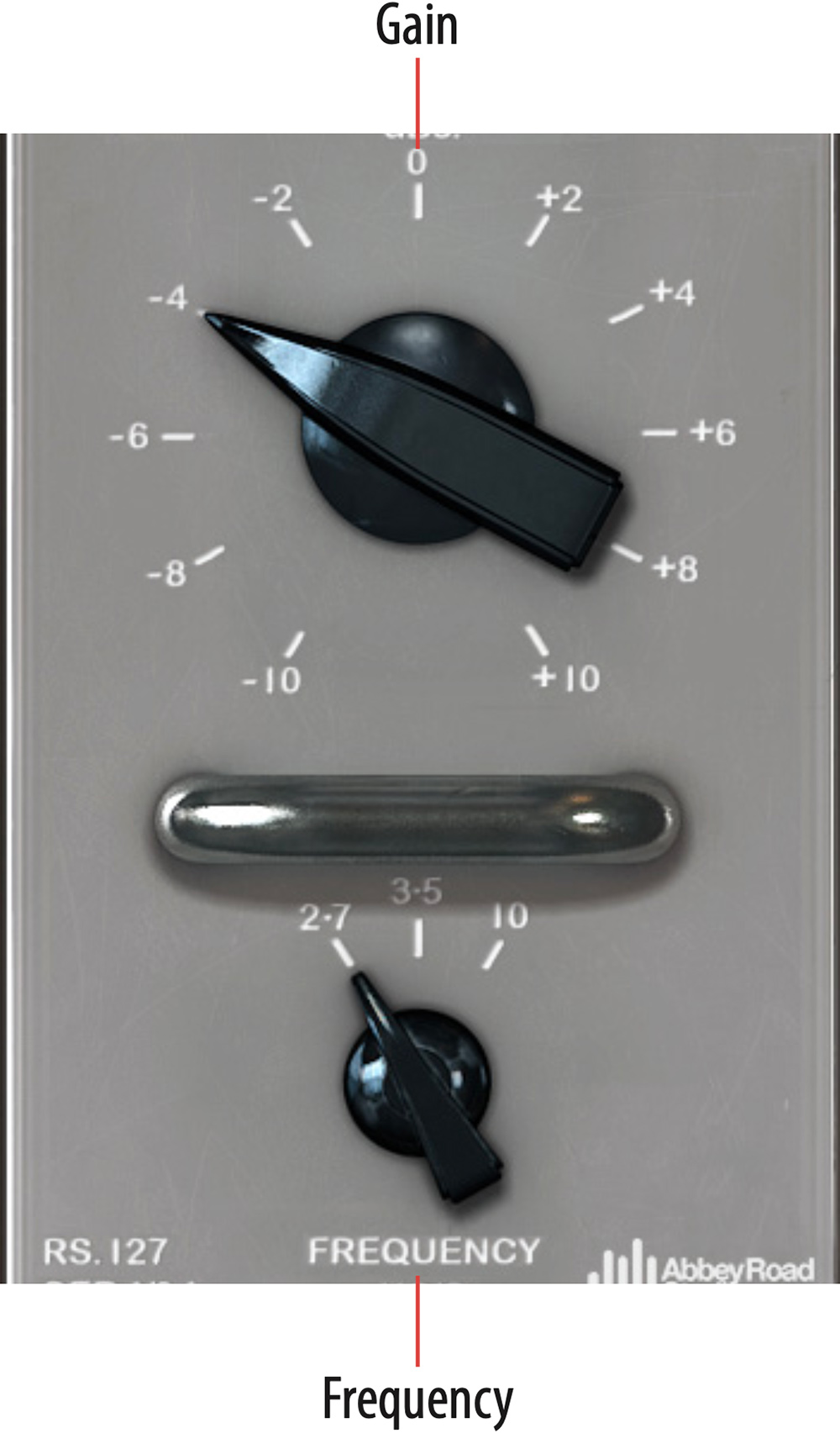
Frequency (kc/s): This control sets the centre frequency at which the plug-in will boost or cut in kilocycles per second - (kHz). The available settings are 2.7, 3.5 and 10 kc/s (kHz). The default setting is 3.5.
Gain (dBs):This control sets the amount of boost or cut which takes placed at the selected frequency in decibels. It can be set to +/- 10 dB in 2 dB steps. The default setting is 0.
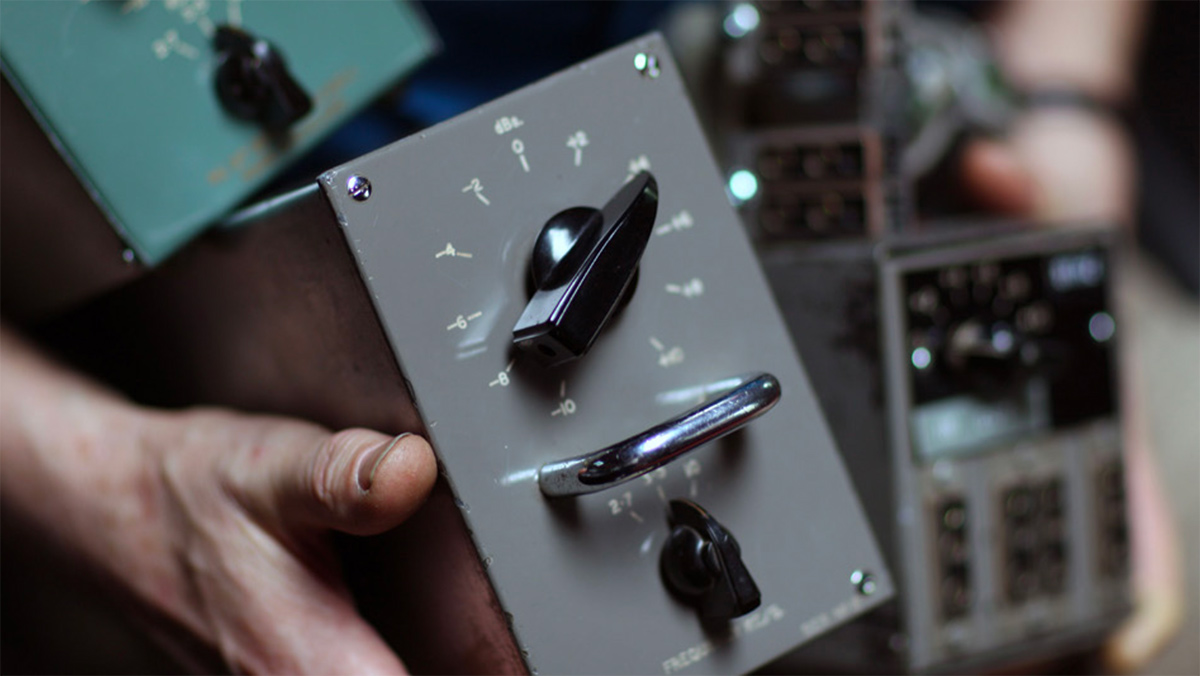
The ‘RS127 Box’ plug-in recreates the standalone RS127 unit along with effects caused by interaction between components in the RS127 and an interfacing transformer.
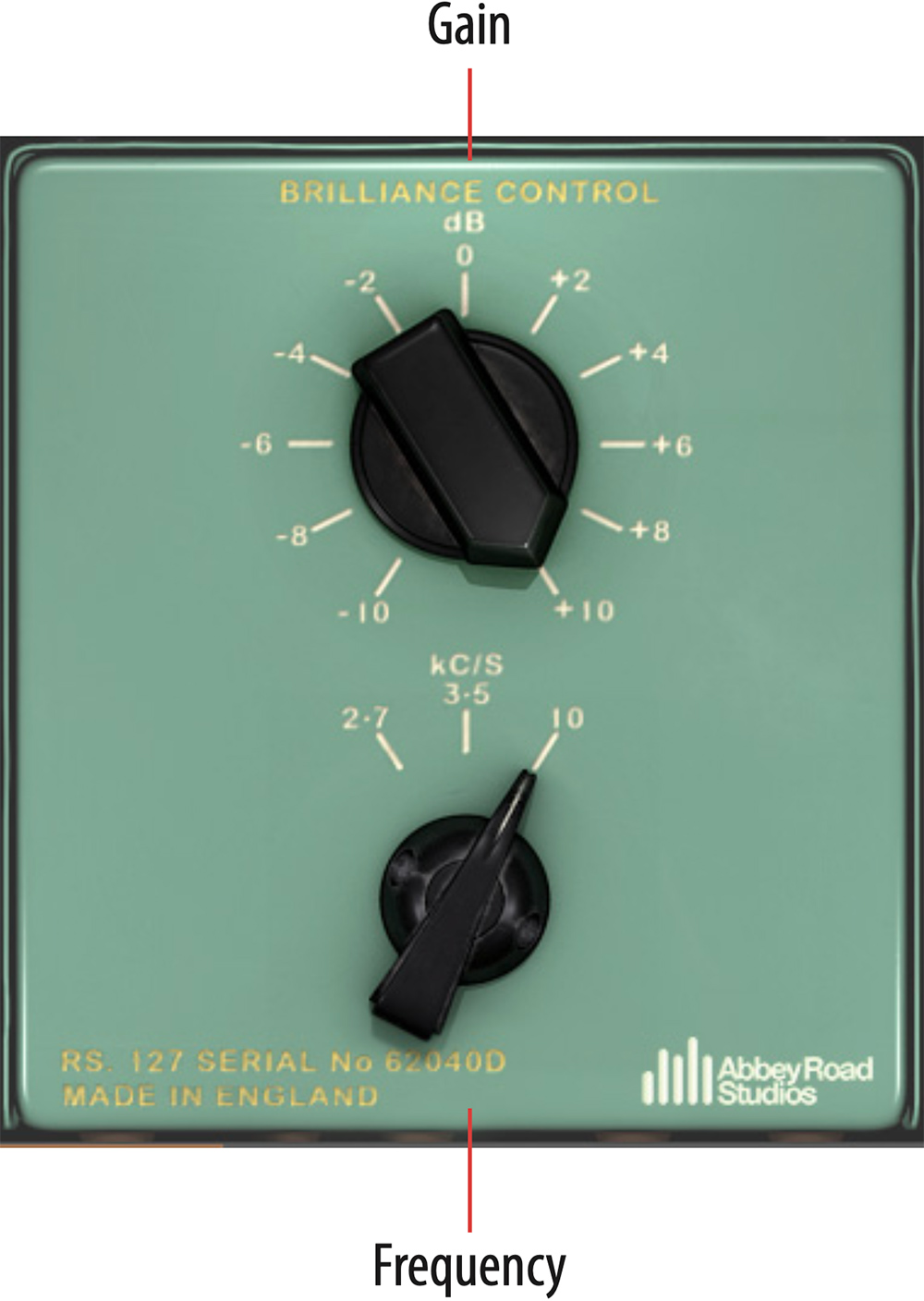
Frequency (kc/S): As on the RS127 Rack plug-in, this sets the centre frequency at which the plug-in will boost or cut in kilocycles per second (kHz). As on the RS127 Rack, the available settings are 2.7, 3.5 and 10 kc/s (kHz), but the interfacing transformer causes the centre frequencies to change and this effect has been replicated in the RS127 Box plug-in. The actual centre frequencies are 2.9 kHz, 4.2 kHz and 11.5 kHz.
Gain (dB):This control sets the amount of boost or cut which takes placed at the selected frequency in decibels. It can be set to +/- 10 dB in 2 dB steps. The default setting is 0.
The ‘transformer effects’ can be heard clearly at the higher boost settings, at which the plug-in gives a sharper ‘Q’ or bandwidth. At these settings, there is also significantly more boost than given by the same settings on the RS127 Rack plug-in.
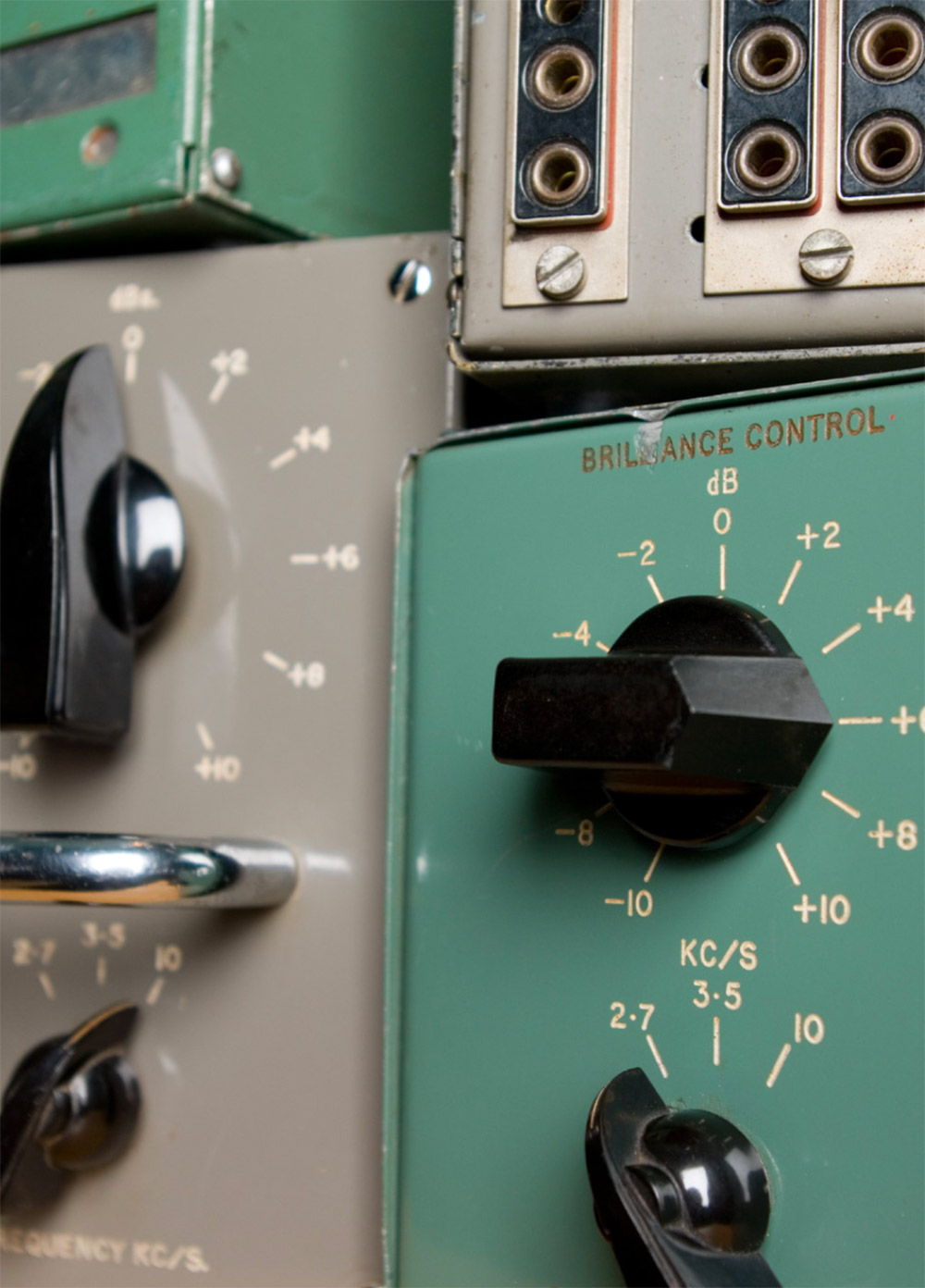
The RS135 plug-in provides an accurate model of the EMI 8 kHz boxes. It has a single control, which sets the amount of boost, and provides the same ‘medium sharp’ bell-shape characteristic as the original boxes.
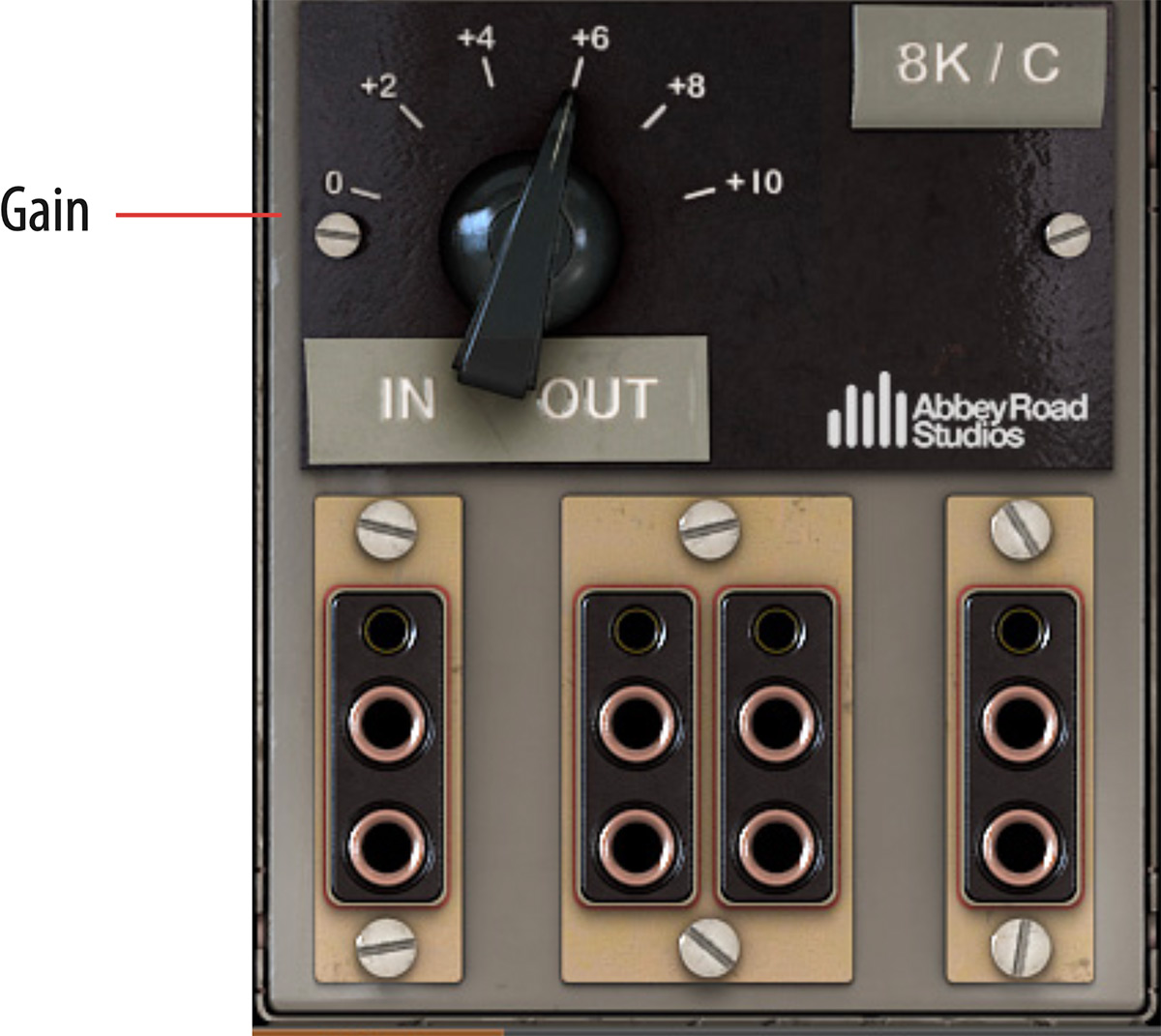
Gain: The Gain control sets the amount of boost in decibels. It provides up to 10 dB of boost in 2 dB steps. The default setting is 0.
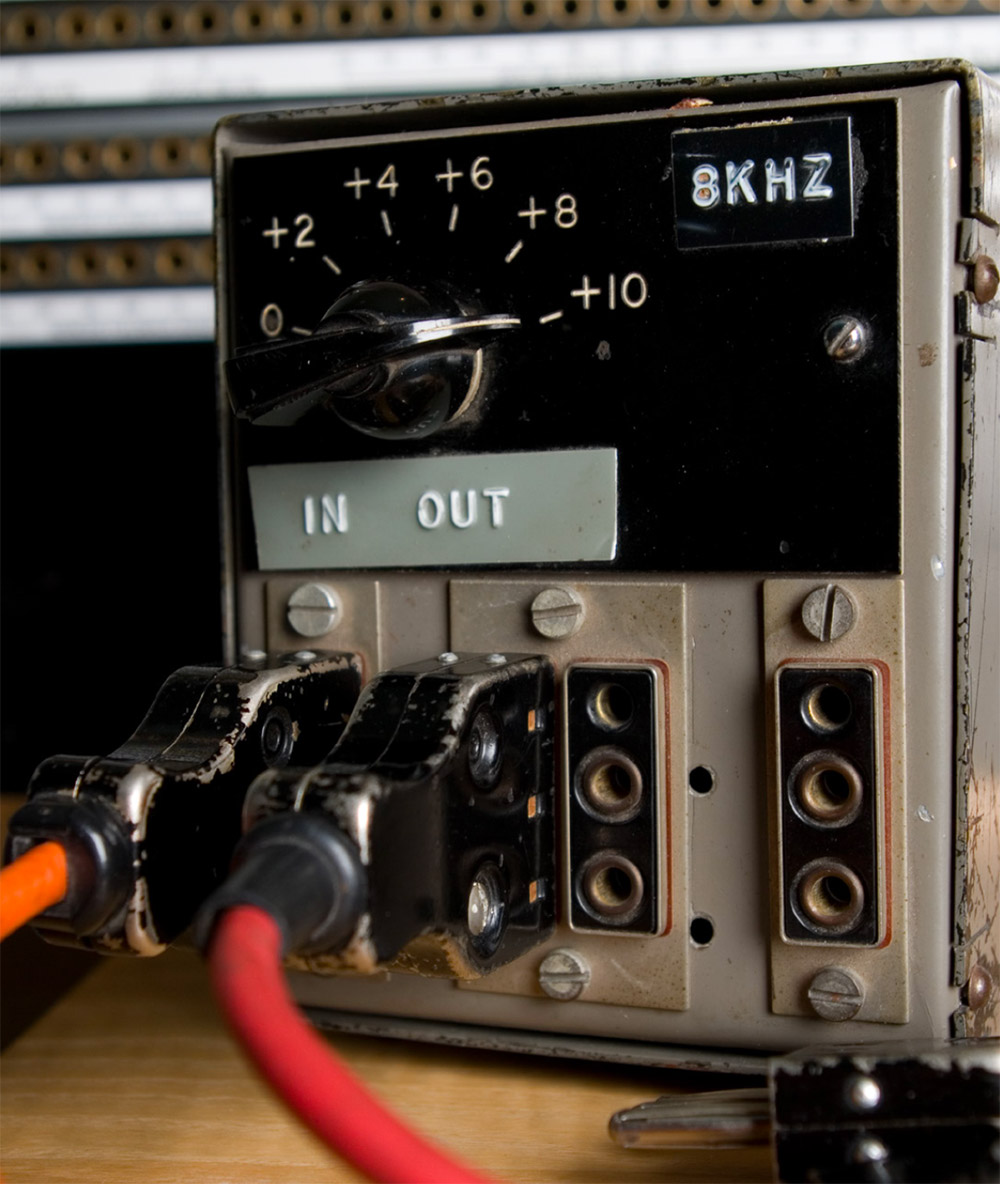
Abbey Road Brilliance Pack for Amp Room

When purchasing this product, you automatically gain access to running the plugins as modules inside the Amp Room platform. The modules can be matched and arranged together with any other native Amp Room module or other Amp Room-ready modules that you might own.
A whole range of added control can be accessed with Extended Features. Please see the separate "Extended Features" manual for more information.
Abbey Road Studios – Product development and documentation
Niklas Odelholm – Modeling
Oscar Öberg– DSP programming
Torsten Gatu – Framework programming
Arvid Rosén – Framework programming
Ulf Ekelöf – 3D rendering
EMI and ABBEY ROAD are trademarks of EMI (IP) Limited. REDD, RS127 and RS135 are trademarks of EMI (IP) Limited.